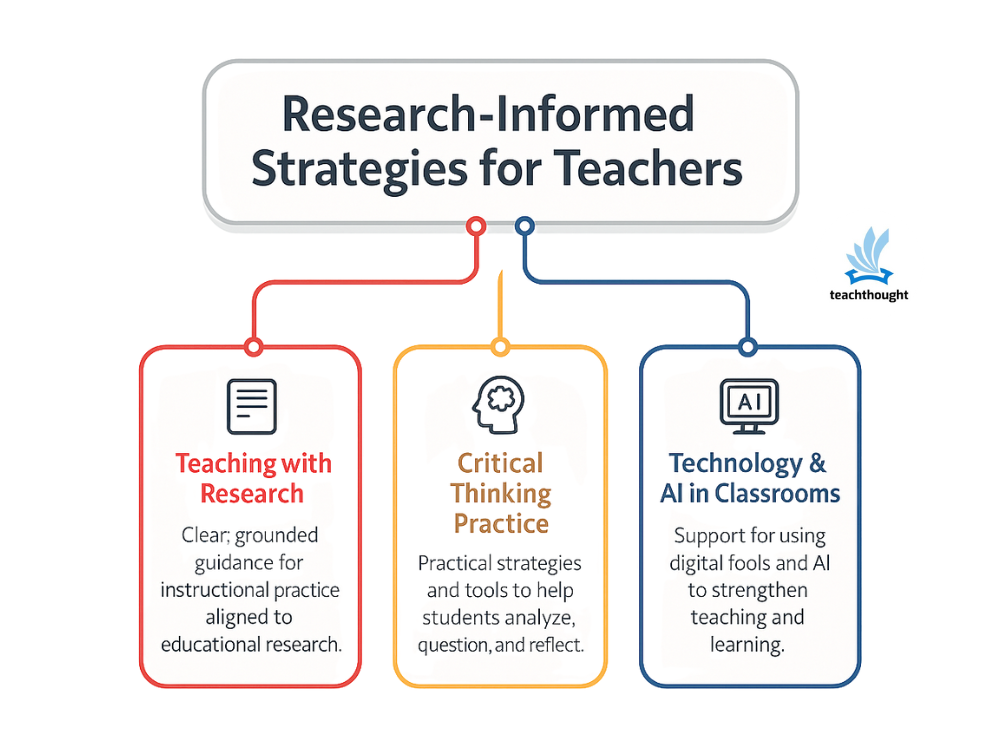40 Homeschooling Tools And Resources I Use (Almost) Every Day
by Terry Heick
Okay, we may not use every single tool every single day but you get the idea: These are our favorite homeschooling tools and resources and we use them extensively.
In fact, there’s very little outside this list that we consistently use.
The Context
Our family started ‘homeschooling’ our children seven years ago.
How we came to that decision (and what we’ve learned in the process and what we’d do differently if we had the chance) is probably more interesting than a basic overview of the homeschooling tools and resources we use to do so. (We also aren’t huge fans of the term ‘homeschooling,’ but that’s another story.) Nonetheless, here’s that basic overview of the technology we use with a preface:
We don’t use a set ‘curriculum’
Our goal isn’t ‘college prep’ but we do want them prepared for college. If you want pure college prep, there are very specific curricula available that would suit your needs and most are fairly well-known.
We don’t ‘unschool’ our kids but they also don’t learn the traditional content areas with a traditional schedule in a traditional way In general, we focus heavily on literacy, critical thinking, and a personalized approach to learning while they navigate gradually more complex ideas in new ways.
This isn’t a ‘how to homeschool’ post but rather a quick list of the tools and resources I’ve cobbled together over the years to get as close as we can to the vision of learning we have for them.
This also isn’t a list of homeschooling resources like attendance records and letters to the school district and homeschooling laws and so on. TeachThought is not a great resource for that kind of thing because–well, because we don’t find it very interesting or conducive to innovation in education. There are some fantastic resources out there for that sort of thing a Google search could help you turn up.
With that all in mind, here’s what we–as of the 2021 school year–use in our home. (I had no idea we used this many tools until I sat down to make this list in response to a reader question; this list isn’t even exhaustive! There are more!)
The Tools: 40 Homeschooling Tools And Resources We Use Every Day
Note: It changes over time, but over the last couple of years our most commonly-used tools are probably IXL, the Brilliant app, Epic reading, Master Class, Google Earth, and YouTube
Brilliant, MasterClass, edX, Coursera, and Udacity for online courses/MOOCs
TeachThought for recommended reading lists by grade level (I’ll give more info here soon.) We also use TeachThought for PBL cheat sheets, critical thinking models, etc., as well as our learning taxonomy, self-directed learning model, question stems, team-building games, and more.
IXL to practice their traditional academic ‘skills’ (we’re huge fans of IXL).
Learning blends from learnthought.com. (See our post on combination learning for more info.)
Google Chromebooks for basic browsing and research. They’re cheap, reliable, sturdy, have strong battery life, and work in almost every circumstance. Paired with mobile devices like iPads and phones, they do almost all of what we need.
Google Earth for a wide variety of project-based learning ideas (e.g., exploring ‘places’ around the world, examining communities, observing socioeconomic factors, science ‘studies,’ geography surveys, topographical analyses, etc.
iPads for apps (see above), media consumption, game-based learning, etc.
Trello to communicate within the family about goals, priorities, changes, etc. (You could also use Microsoft Teams, Slack, a closed Facebook Group, etc. This isn’t difficult.)
Google Drive for digital portfolio curation. (We also use Instagram and FlipGrid for this when we remember but it’s not a priority.)
WordPress to create learnthought.com–a portal to host ideas and resources
ABC Mouse (in addition to various basic phonemic practice apps) to practice emerging literacy.
Pinna for podcasts for young children
YouTube to create playlists of incredibly value educational content (SmarterEveryDay, for example)
Xbox, PlayStation 4, and Nintendo Switch for more substantive game-based learning–compared to iOS and Android, for example. Nintendo Labo is also great (affiliate link).
CK-12 is also useful here, as is Khan Academy, Moby Max, and others.
ReadWorks for ‘reading passage’ practice.
Pocket, Feedly, and Epic to skim, curate, and share collections of things we want them to read.
Reddit as a sometimes-resource to help them solve problems we as parents can’t help them with
Audible as a digital library of books
My local library for a physical library of books
Local co-op programs to take classes with other kids their age once or twice a week
General utilities: Zoom, Skype, FaceTime, Google Drive, FlipGrid
Pre-K & Early Literacy: Pinna, Epic! Netflix, YouTube for Kids, ABC Mouse, ABC Genius, drawing apps, various games for game-based learning, etc. Also consider sites like Twinkl for a range of general resources, worksheets, etc. (for the small percentage of the time I use them).
English-Language Arts and Literature: the aforementioned TeachThought reading lists + IXL
Vocab: Knowji, Moby Max, various grade-level vocab lists (including ACT and SAT recommended word lists)
Science: Smarter Every Day, MITx, Google Science Journal, Wonder Science, SCQ, Brilliant, The Sandbox, various science podcasts
Math: IXL, CK-12, Khan Academy, YouTube
Social Studies: IXL, Moby Max, various history podcasts
Foreign Languages: Duolingo, IXL
Maker Learning: DIY.org, Minecraft, Codea, Scratch, Makey Makey

